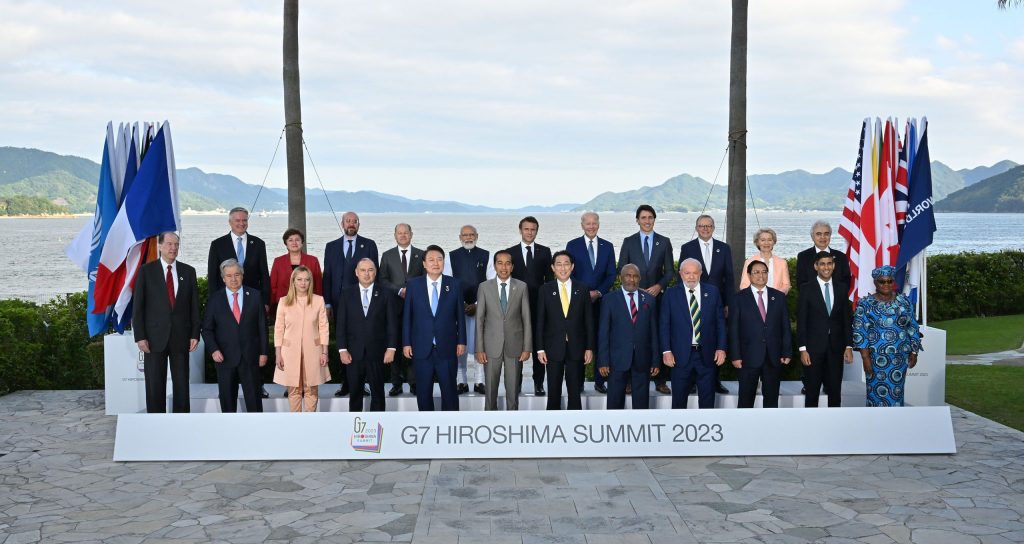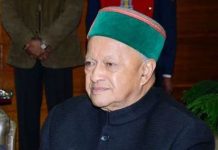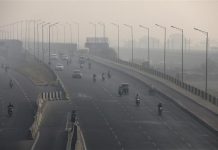
On the sidelines of the Hiroshima summit, India and Japan have moved ahead to develop a new trade hub, Southern Economic Corridor (SEC), aimed at turning India’s north eastern states and countries like Bangladesh, Thailand and Vietnam into an industrial manufacturing hub.
The G7 could not offer any substantial peace initiative at its summit held on May 19-20, 2023, at Hiroshima, Japan, in ending the ongoing East European conflict i.e. Russia-Ukraine War, but on the sideline of this high-table summit, India and Japan have moved ahead for developing a new manufacturing and trade hub, Southern Economic Corridor (SEC) in the Indo-China.
The proposed SEC envisages India-Japan economic co-operation for turning India’s north-eastern states and other countries of the region, including Bangladesh, Thailand and Vietnam, into an industrial manufacturing hub. It has stated to have received approval from the G-7 nations, who too are keen to diversify the supply chain, which is dependent upon China.
Indian Prime Minister Narendra Modi, perhaps, was the only among the world leaders to talk about a peaceful resolution of the Russia-Ukraine War. He reiterated his agenda, when he met the Ukrainian President, Zelenskyy, promising that his government would do her best to usher in peace in Eastern Europe. With the stiffening of the attitude within G-7, there appears to be no early solution to the 15-month old ongoing conflict.. Most of the G-7 leaders were seen vying with one another in offering financial and weapon support to Ukraine.
The war is being called fratricide, because both Russians and Ukrainians are intertwined with each other having common religious affinity, close family ties, marriages having common history fighting aggressions. They had together defeated Hitler’s forces during the W.W.-II, but in recent years the deliberate western penetration has created a deep wedge between the two nations.
Unfortunately, instead of working out any strategy for peace, the G-7 members comprising the USA, Canada, U.K., France, Germany, Italy and Japan, were seen offering state-of-the art weapons and funds to Ukraine.
The Anti-Bomb Resolution
Few took the resolution for a nuclear-weapon free world adopted at the G-7 seriously. It could have been just a rhetoric intended to pay tribute to the victims of Hiroshima, when the Americans had dropped an atom bomb instantly killing more than 100 thousand people, and the survivors have been suffering the effects of radiation since then. The Americans never told the world why they used the ultimate weapon against Japan, a country already defeated in World War-II and was in the process of surrendering before the allied forces.
Meanwhile, the decision of the summit to further arm the Ukrainians has already received sharp reaction from Russia. It is feared that the conflict might escalate, especially when China has extended its support to Russia with its strong economy. Its peace proposal is already pending with Ukraine. There is little possibility that the West could actually force Russia to end the conflict without agreeing to a proper peace package. It is stated that the main hurdle in the peace process is that Ukraine does not want to assure Russia that it would not join the NATO (North Atlantic Treaty Organization). The West is also not ready to concede the Russian demand that it would not enrol the Eastern European countries, which were once a member of the Warsaw Pact.
The Russians are also unhappy that while they were refused membership of NATO, the Americans are quietly enrolling the Eastern European nations. It is also stated that Moscow has been apprehensive regarding the recent expansion of NATO, which is being considered an attempt to dilute the Russian influence in the region. Amidst these developments, the repression of the Russian-speaking population in Ukraine caused further anxiety at the Kremlin, which had finally led to the Russian aggression against Ukraine.
Apart from Modi, the president of the European Commission, Von der Leyen, also attended the summit. It is being interpreted as a symbol of the unity of the European Union, a “non-enumerated member”. Interestingly, Modi, who was attending the summit as a guest at the invitation of the Japanese PM, Fumio Kishida, did not evince any interest to become a member of the G-7 replacing Russia, which has ceased to be its member following the outbreak of the Ukraine conflict. India, however, hopes that if the peace process begins Russia might resume its legitimate role in this powerful forum.
Media Comments against Modi
Few in New Delhi take the western media comments against Modi seriously, especially following the revelation that the US administration has already investigated how much Chinese funds have been pumped into the major dailies like the New York Times and a few media channels. It, however, is yet to be known how the American administration is preventing the inflow of the huge funds from the Chinese government-owned corporate accompanied by large doses of advertisements. In New Delhi, it is being jokingly asked whether their description of Modi’s presence at the high table as the biggest supporter of Russians is serving the Western interests or it is being done to please the Dragon. Meanwhile, the American media’s recent maligning of India shows that despite American rhetoric against China, the western powers are unable to counter the influence of the Chinese penetration in their systems. The media, academia and real estate continue to be under the influence of the Dragon.
Undeterred by such adverse anti-India publicity, the President Joe Biden during the summit walks towards Modi to hug him warmly. It could not be just a photo opportunity, but it has given a clear message that the democratic nations trust India despite having some perception-differences with her.
Biden’s Flies to Japan
Joe Biden, who had cancelled his visit to Papua New Guinea and Australia due to the impending debt crisis, has assured the G-7 nations that America would honour its securities. It is being stated that if the issue could not be resolved within this month i.e. if the US fails to en-cash the securities, the world economy might face the much-feared worldwide economic slow-down.
Earlier, it was hoped that Biden’s decision to attend the G-7 summit, in spite of the looming debt crisis, that some substantial peace process might be initiated; instead US commits to give F-16 fighters to Ukraine, offers to train its pilots to use this fifth generation fighter aircraft to be used against Russia. In other words, there is no immediate hope that the world’s rich nations will genuinely be taking any peace initiative.
It is not known what impact would have on the G-7 economies if the conflict in Europe is not ended. It is being stated that the US debt crisis might further intensify, if peace is delayed. As of January 2023, the five countries owning the most US debt are Japan ($1.1 trillion), China ($859 billion), the United Kingdom ($668 billion), Belgium ($331 billion), and Luxembourg ($318 billion). Therefore, in spite of American rhetoric against China, the western economies depend upon China.
The proposed S.E.C., which envisages industrial value chain, perhaps, offers a practical approach to the economic issues of the Indo-China region. Also, it might reinvigorate the economies of the region. The idea was discussed during the G-20 meetings in September held in India between the Japanese PM Kishida and Modi, and now it is poised to take off to serve the other nations of the region.












